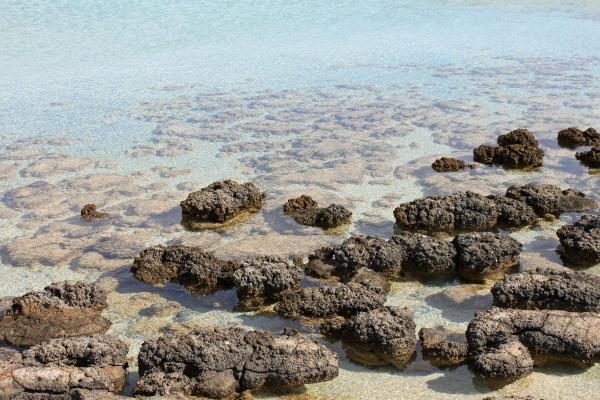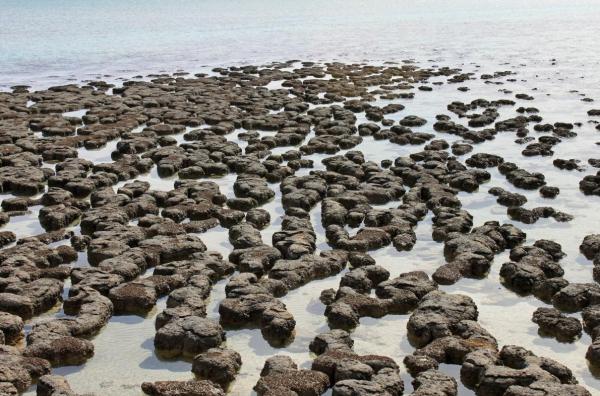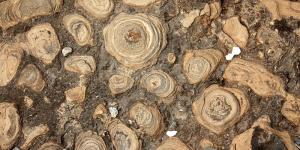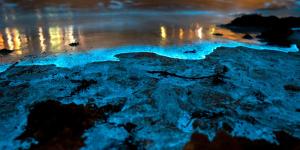What Are Stromatolites?


Stromatolites are rock-like formations that serve as evidence of the oldest life forms on Earth, dating back over 3.5 billion years. They are created through a complex process in aquatic environments and are composed of layers of bacterial colonies. Stromatolites also represent the first evidence of photosynthesis, which sheds light on the evolution of life on our planet.
In the following article from thedailyECO, we explain what stromatolites are, highlighting their unique features, and presenting many other interesting facts about these ancient structures.
What are stromatolites?
Stromatolites are rock-like structures that are formed through the accumulation and precipitation of minerals on microbial mats.
These mats are composed of layers of bacterial colonies that are able to trap sediment particles and eventually cement them together to form layers. Over time, the accumulation of these layers creates the characteristic dome-shaped structure of stromatolites. These layers can vary in thickness and shape, ranging from flat to hemispherical or columnar.
They are believed to be the oldest evidence of life on Earth, with some formations dating back more than 3.5 billion years. Stromatolites are typically found in aquatic environments, such as shallow marine or freshwater areas.
Characteristics of stromatolites
Stromatolites have several distinctive characteristics that make them unique structures. Let us take a closer look at some of these:
- They are typically dome-shaped, and can range in size from small, button-like shapes to large, boulder-sized formations.
- They typically thrive in conditions that are often hostile to most life forms, including high temperatures, salinity, and acidic pH levels.
- Stromatolites are formed through the accumulation of layers of microbial mats, which are composed of bacterial colonies that trap sediment particles and eventually cement them together.
- They are usually found in shallow marine or freshwater environments, where they grow in layers on the bottom of the water.
- The biological diversity of each stromatolitic community is determined by a range of environmental factors, such as light exposure, temperature, and salt concentration, among others.
- Stromatolites are composed of minerals, such as calcium carbonate or silica, that have been precipitated from the surrounding water.
- Cyanobacteria and heterotrophic bacteria are the most common organisms found within these communities. However, other microorganisms can also be present, such as diatoms, green and red algae, fungi, crustaceans, and marine sediments.
- Stromatolites provide valuable insight into the evolution of life on Earth, as they represent some of the earliest evidence of photosynthesis and the development of microbial communities.
You might be interested in this other article, where we explain what is coastal erosion, its mechanisms, its various manifestations, and its effects.

How are stromatolites formed?
Stromatolites are formed through a complex process that involves the fixation, uptake, and precipitation of carbonate particles, primarily calcium carbonate, in microbial mats or biofilms.
These biofilms are intricate ecosystems consisting of microorganisms embedded in a mucilaginous matrix. Typically, the primary colonizers of the mat are photosynthesizing cyanobacteria, which capture carbon dioxide from the atmosphere through oxygenic photosynthesis, producing oxygen and forming carbonates that can precipitate and ultimately form stromatolites.
The formation process of stromatolites occurs through two mechanisms: mineralization and sediment fixation. The metabolic processes of bacterial colonies and other microorganisms promote the mineralization or precipitation of various minerals.
These same processes can also trap sediment particles on the surface of the microbial mat, increasing the size of the structure layer by layer. As the cells in each layer die, the calcium carbonate in their walls is deposited on the previous layer, creating a new living layer. This slow process creates a rock of organic origin, the stromatolite.
You might be interested in this other article, where we explain what fossilization is.
Where are stromatolites found?
Stromatolites are currently only found in a few locations around the world, including:
- Exuma Cays - Bahamas
- Shark Bay - Australia
- Four Swamps - Mexico
- Bacalar Lagoon - Mexico
- Chichankanab Lagoon - Mexico
- Lagoa Salgada- Brazil
- The Red Sea - Saudi Arabia, Egypt, and Sudan
- Pampa del Tamarugal National Reserve - Chile
- Salar de Llamara - Chile
- Yellowstone - United States
All the previously mentioned stromatolite sites are typically found at sea level and in warm climates. However, researchers recently made a significant discovery in Argentina.
Stromatolitic communities were found in Socompa Lagoon in the province of Salta, Diamond Lagoon in Catamarca, and Sea eyes in Tolar Grande in Salta, Argentina. These communities have similar characteristics to those found on the primitive Earth, and they provide valuable information to scientists about the evolution of life on Earth and how it has adapted to different environments.
Furthermore, the Socompa lagoon is a unique case as it is the only place in the world where living stromatolites, currently forming, and fossilized stromatolites coexist.

What is the importance of stromatolites?
Stromatolites are incredibly significant for several reasons:
- They were instrumental in creating an oxygen-rich atmosphere on Earth. Due to their ability to perform photosynthesis, stromatolites were the primary producers of oxygen for billions of years. This makes them crucial oxygenators and key to the development of life on our planet.
- Stromatolites play a critical role in addressing climate change. By capturing carbon dioxide through photosynthesis, they can help mitigate the effects of global warming by reducing the amount of carbon dioxide in the atmosphere.
- Stromatolites serve as an essential record of Earth's history, providing a unique insight into biological activity over the last 3.5 billion years. The study of stromatolites can help us understand how life evolved and adapted to different environments over time.
- Stromatolites are significant in astrobiology, as they provide a model for understanding life on other planets. By studying stromatolites and the conditions that allowed them to form, scientists can better understand the potential for life beyond Earth.
- Stromatolites were the first builders of reef zones, providing a habitat and food source for a vast array of species. This makes them an essential component of the marine ecosystem, as they play a critical role in sustaining biodiversity.
As you can see, stromatolites are an essential element of Earth's history, playing a fundamental role in creating and sustaining life. Their study and preservation are crucial for our understanding of the past, present, and future of our planet.
If you found this article interesting, you may want to check out our other piece on environmental degradation. In that article, we provide a clear definition of the term, along with real-life examples of its causes and effects.
If you want to read similar articles to What Are Stromatolites?, we recommend you visit our Facts about nature category.
- Beraldi, H. “ Stromatolites ”. Available at: Institute of Geology https://www.geologia.unam.mx/contenido/estromatolitos#
- Rodriguez-Martinez, M., et al ., (2010). “ Stromatolites: the rocks built by microorganisms ”. Available at: http://www.revistareduca.es/index.php/reduca-geologia/article/view/165/185
- Farias, ME (2012) “Stromatolites and the origin of life” Available at: https://www.youtube.com/watch?v=d70KrTN0xv4







